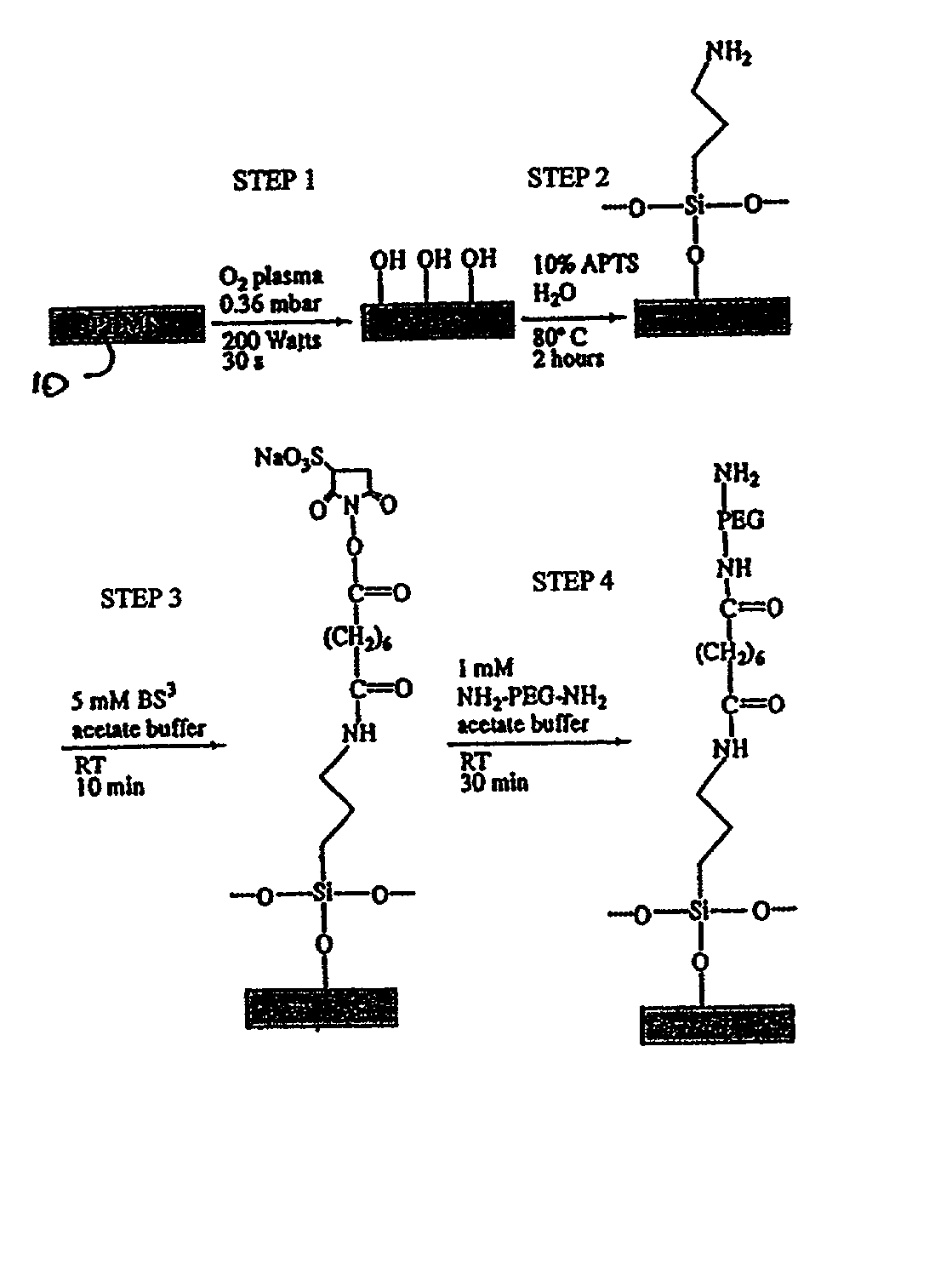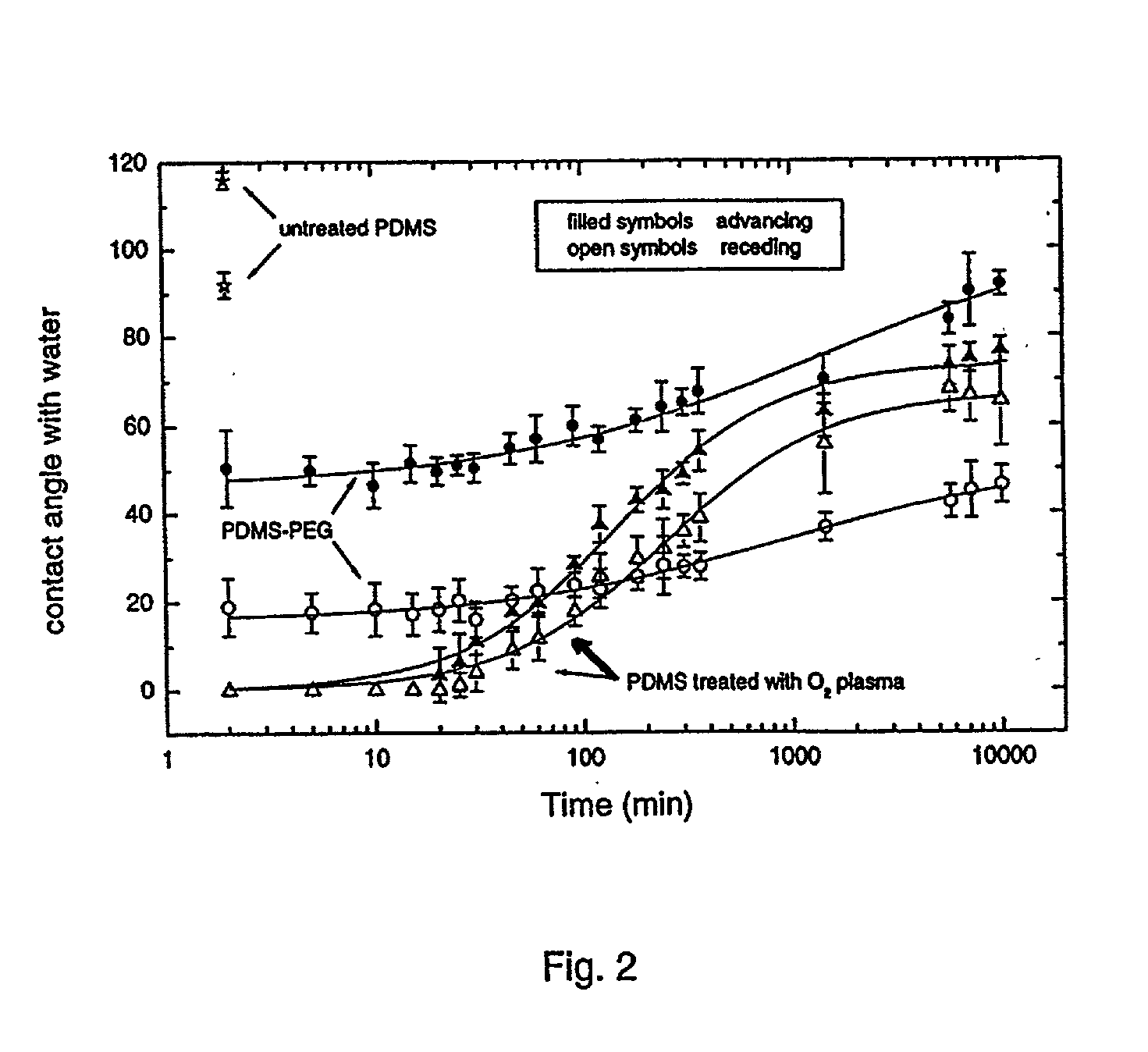Silicone elastomer stamp with hydrophilic surfaces and method of making same
- Summary
- Abstract
- Description
- Claims
- Application Information
AI Technical Summary
Benefits of technology
Problems solved by technology
Method used
Image
Examples
example 1
[0060] Example 1 for method C' (Table 1):
[0061] First, the PDMS stamp (Sylgard 184.TM. was treated with a low dose of oxygen plasma(120W, 20s). Then, a drop of SSP-060 (trimethoxysilylpropyl modified (polyethylenimine) (ABCR) was applied for 5 minutes. After that the stamp was washed with i-propanol, ethanol, and finally water. Even after 25 days, the receding contact angles of such treated stamps were well below 50.degree. (36.degree. and 43.degree. ) whereas a control only treated with plasma reached a receding contact angle of 85.degree. during the same period.
[0062] Example 2 for method C' (Table 1):
[0063] 1) Preparation of mixture A:
[0064] 0.4 g maleic acid anhydride were dissolved in 5 ml i-propanol. This solution was added to 6 g of SSP-060 (trimethoxysilylpropyl modified (polyethylenimine) (ABCR)). The mixture was stirred for 30 minutes and used for further treatment of PDMS stamps.
[0065] 2) Hydrophilization of stamps:
[0066] First, the PDMS stamp (Sylgard 184.TM.) was treate...
PUM
| Property | Measurement | Unit |
|---|---|---|
| Polarity | aaaaa | aaaaa |
| Surface properties | aaaaa | aaaaa |
| Hydrophilicity | aaaaa | aaaaa |
Abstract
Description
Claims
Application Information
 Login to View More
Login to View More - R&D
- Intellectual Property
- Life Sciences
- Materials
- Tech Scout
- Unparalleled Data Quality
- Higher Quality Content
- 60% Fewer Hallucinations
Browse by: Latest US Patents, China's latest patents, Technical Efficacy Thesaurus, Application Domain, Technology Topic, Popular Technical Reports.
© 2025 PatSnap. All rights reserved.Legal|Privacy policy|Modern Slavery Act Transparency Statement|Sitemap|About US| Contact US: help@patsnap.com



